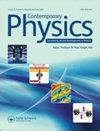String theory and the real world: the visible sector, 2nd edition
IF 3.3
4区 物理与天体物理
Q2 PHYSICS, MULTIDISCIPLINARY
引用次数: 0
Abstract
exploration. Only in the very last activity on digital electronics is there an open challenge presented to the students. Missing is a short review of uncertainties and least squares fitting of linear functions. This despite a majority of activities directing the students to use Excel to obtain a best fit linear approximation to the ‘data points’. A short guide to the PhET simulation on least squares regression would have been a valuable addition. An important question is whether the text provides added value compared to the descriptions accompanying the PASCO experimental kits. Unfortunately, it seems that in his endeavour to make the simulation procedures as close as possible to what a student might experience with the equivalent Pasco kit, Professor Erenso has, at least in some cases, somewhat curtailed the ‘real’ activity. A pertinent example is the activity on resistors and Ohm’s law. The text guides the student in making current versus voltage drop measurements on a single resistor connected to a variable power supply, a task which is also easy to simulate in one of the PhET modules. The equivalent Pasco activity directs the student to also make measurements by replacing the resistor with an incandescent light bulb and a semiconductor diode. The student is then invited to consider why the light bulb despite being essentially a metallic filament does not obey a linear Ohm’s relation (and is of course much harder to simulate). Although it goes against themain premise of providing essentially equivalent virtual and real tracks that can be switched easily, one could argue that a more fruitful approach would be to leverage the strengths of virtual simulations to emphasise the key concepts and explore the relationship between the relevant experimental parameters as a pre-lab activity. Then building on this foundation, more open-ended experimental challenges could be proposed in the laboratory and the limits imposed by experimental uncertainty or unjustified idealizations could be explored. Finally, perhaps due to the sense of urgency provoked by the pandemic, when many students were locked out of the teaching laboratories, there are a few flaws in this first edition. The resolution of themajority of figures illustrating the virtual labs is low – they appear to be cropped screenshots. Several misprints are present. Given the simulations’ prominence, it is curious that the PhET project is often referred to as PhTH, while the University of Colorado at Boulder has been relocated to ‘at Boulevard’. More troubling is some confusion about the time-dependent Schrödinger equation in the introduction to atomic physics. Also, the theory presented is limited to describing the gross energy structure of the hydrogen atom. Because angular momentum is ignored, the virtual activity specifies, without justification, that the Bohr model should be used instead of the Schrödinger prediction which might reinforce common misconceptions about atomic electron orbits. In summary, if an instructor is looking for a set of experimental activities that can be readily switched at will from in-person to virtual, this is a book worth considering for an algebra-based introductory course covering simple optics, early modern physics and electronics. If the Pasco kits are available, little effort would be required to implement the experimental programme. However, by choosing to provide parallel virtual and real activities, the synergies and reinforcement that could be accessed through a more complementary approach are lost.弦理论和现实世界:可见部分,第二版
探索。只有在关于数字电子的最后一项活动中,才有一个公开的挑战呈现给学生。缺失的是对线性函数的不确定性和最小二乘拟合的简短回顾。尽管大多数活动指导学生使用Excel来获得“数据点”的最佳拟合线性近似值。一个关于PhET模拟最小二乘回归的简短指南将是一个有价值的补充。一个重要的问题是,与PASCO实验套件的描述相比,文本是否提供了附加价值。不幸的是,在他努力使模拟过程尽可能接近学生使用等效Pasco套件的体验时,至少在某些情况下,Erenso教授多少减少了“真实”的活动。一个相关的例子是电阻器上的活度和欧姆定律。本文指导学生在连接到可变电源的单个电阻上进行电流与压降测量,这一任务也很容易在PhET模块中进行模拟。等效的Pasco活动指导学生用白炽灯泡和半导体二极管代替电阻器进行测量。然后学生被邀请考虑为什么灯泡尽管本质上是金属灯丝,却不服从线性欧姆关系(当然很难模拟)。虽然它违背了提供本质上等同的虚拟和真实轨道的主要前提,可以很容易地切换,有人可能会认为,一个更富有成效的方法是利用虚拟模拟的优势来强调关键概念,并探索相关实验参数之间的关系,作为实验室前的活动。然后在此基础上,可以在实验室中提出更多开放式的实验挑战,并探索实验不确定性或不合理的理想化所施加的限制。最后,也许是由于疫情引发的紧迫感,当时许多学生被关在教学实验室之外,第一版中存在一些缺陷。大多数虚拟实验室的图像分辨率都很低——它们看起来像是裁剪过的截图。有几处印刷错误。考虑到模拟的重要性,令人好奇的是,PhET项目通常被称为PhTH,而科罗拉多大学博尔德分校(University of Colorado at Boulder)则被重新命名为“at Boulevard”。更令人不安的是,原子物理学导论中关于时间相关Schrödinger方程的一些混淆。此外,所提出的理论仅限于描述氢原子的总能量结构。因为角动量被忽略了,虚活度在没有理由的情况下规定,应该使用玻尔模型来代替Schrödinger预测,这可能会加强对原子电子轨道的常见误解。总之,如果一个教师正在寻找一组实验活动,可以随时切换到虚拟,这是一本值得考虑的代数为基础的入门课程,涵盖简单的光学,早期现代物理和电子学。如果Pasco套件可用,几乎不需要努力就可以实施实验方案。然而,通过选择提供平行的虚拟和真实活动,可以通过更互补的方法获得的协同作用和加强就失去了。
本文章由计算机程序翻译,如有差异,请以英文原文为准。
求助全文
约1分钟内获得全文
求助全文
来源期刊

Contemporary Physics
物理-物理:综合
CiteScore
2.90
自引率
5.00%
发文量
18
审稿时长
>12 weeks
期刊介绍:
Contemporary Physics presents authoritative and lucid introductory review articles on important recent developments in physics. The articles are specially commissioned from experts in their field. The authors aim to review comprehensively the current state of their subject and place it within a broader context of contemporary research, industrial possibilities and applications in an accessible way.
The Journal is of particular use to undergraduates, teachers and lecturers and those starting postgraduate studies who wish to be introduced to a new area. Readers should be able to understand the review without reference to other material, although authors provide a full set of references so that those who wish to explore further can do so. The reviews can also be profitably read by all those who wish to keep abreast of the fields outside their own, or who need an accessible introduction to a new area.
Articles are written for a wide range of readers, whether they be physicists, physical scientists or engineers employed in higher education, teaching, industry or government.
Contemporary Physics also contains a major section devoted to standard book reviews and essay reviews which review books in the context of the general aspects of a field.
 求助内容:
求助内容: 应助结果提醒方式:
应助结果提醒方式:


